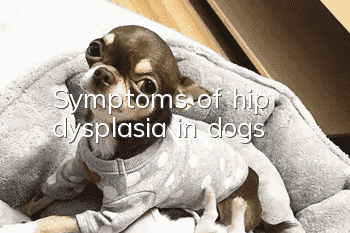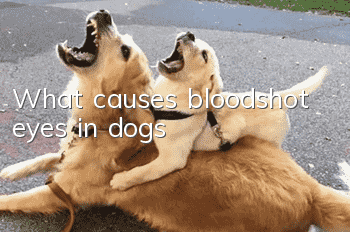Symptoms of hip dysplasia in dogs

The main symptoms of hip dysplasia in dogs include: reduced activity, inability to stand or standing unsteadily, intermittent or persistent lameness, aversion to jumping and climbing stairs, etc. Owners who observe carefully will also find that dogs have Sometimes there will be a bunny hop. In severe cases, dogs will also suffer from loss of appetite and lack of energy due to obvious joint pain, and it will also cause symptoms of constipation in dogs. If the dog has the above symptoms, it is recommended that the owner consult a doctor for a DR examination in time. If the dog is in the young stage, it can only be treated conservatively with drugs first. When the dog reaches adulthood, it can be treated surgically.
1. Reduced activity
Dogs with hip dysplasia may become less active than before. At this time, the owner may find that his dog is not as enthusiastic as before, is not willing to interact with the owner, and spends more time sleeping and resting.
2. Unable to stand or unstable
As the condition worsens, the dog will be unable to stand or stand unstable after lying down for a long time, and the dog will arch its back or sway from side to side when walking.
3. Intermittent or persistent claudication
Abnormal wear and tear on joints can lead to bone hyperplasia, and the ensuing inflammation and pain can lead to intermittent or persistent lameness in dogs. When artificially moving the hip joint, the dog may moan or bite in protest due to pain.
4.Hate jumping and climbing stairs
For dogs, their hind legs play a vital role in their ability to jump and climb stairs. In cases of hip dysplasia, dogs will have strong pain due to joint inflammation that is often accompanied, so dogs will habitually refuse these exercises.
5. Bunny hop
The bunny hopping gait is considered a way to try to relieve hip joint pain. Using both legs during weight-bearing and walking can reduce the strength of each hip joint by half, so dogs with hip dysplasia Dogs may also exhibit "bunny hop" behavior while walking.
6. Hip pain and sensitivity
Dogs with hip dysplasia often experience discomfort and sensitivity due to hip pain, and show resistance, growling, or aggressive behavior when their buttocks are touched by their owners or palpated by their veterinarian.
- How to tell if a dog has rabies
- Things to note when shipping your dog
- How do novices train a Horse Dog? What is the correct way to train a Horse Dog?
- Common sense about dog vaccines
- Which is better, dog food or homemade dog food?
- What causes severe hair loss in dogs?
- How to tell if a Husky is purebred
- What should you pay attention to when raising a husky? A guide to raising a husky!
- Taboos for dogs to eat
- 4 Reasons to Neuter Your Pet



